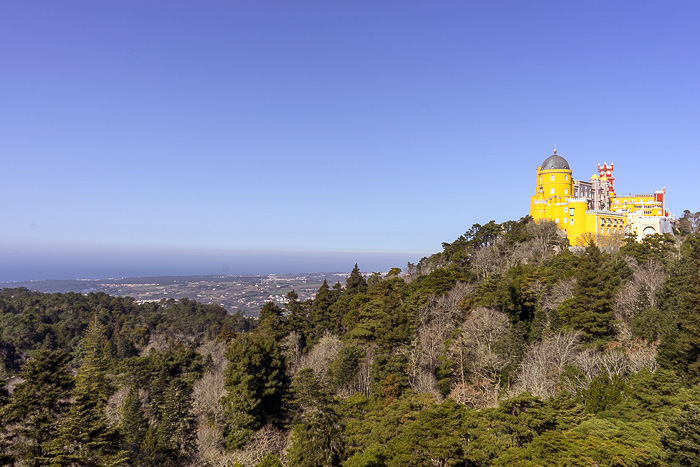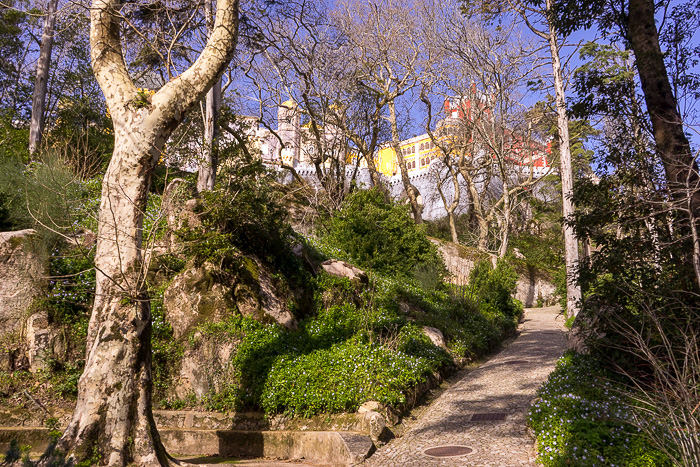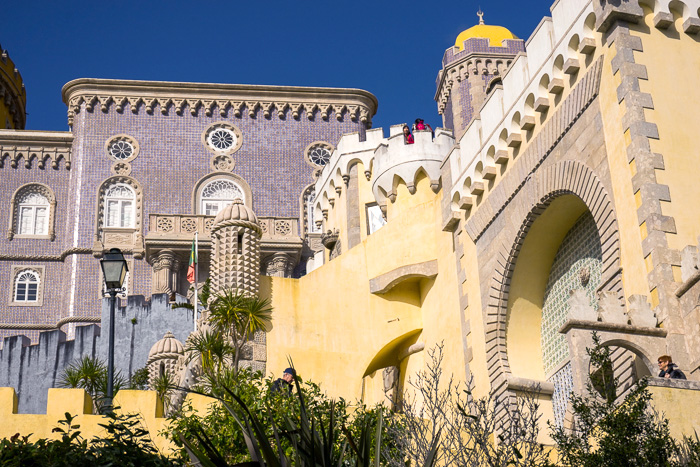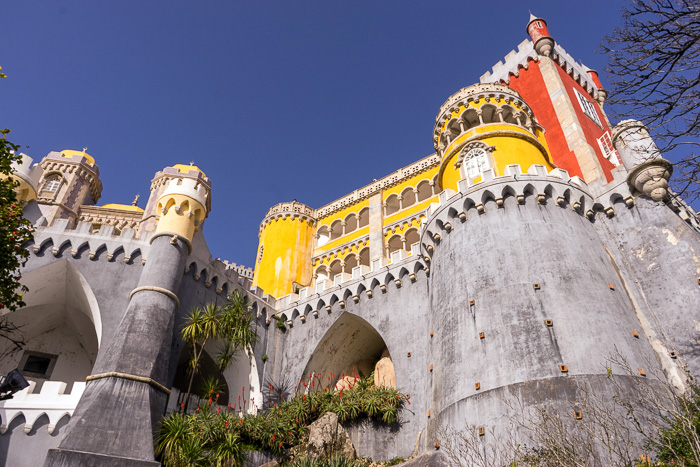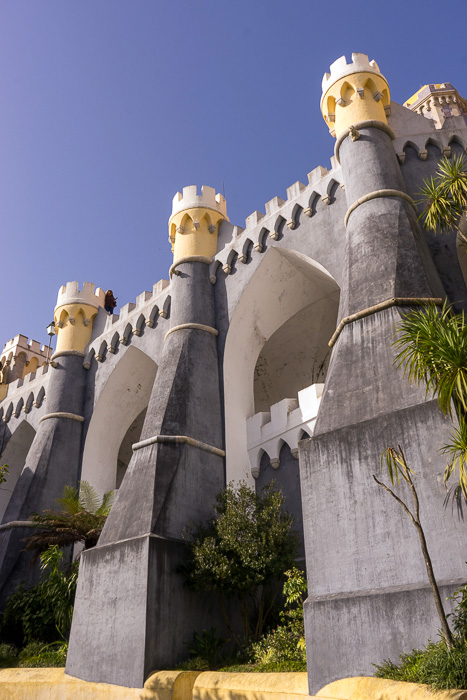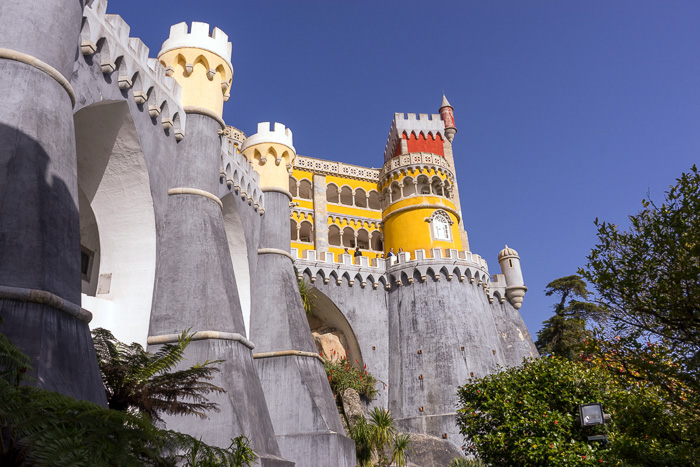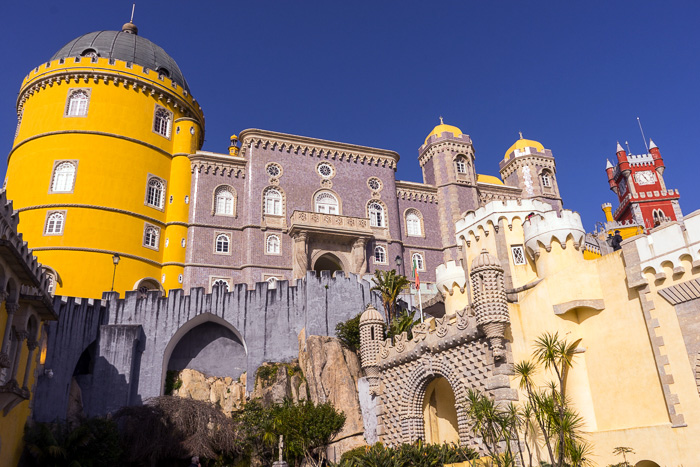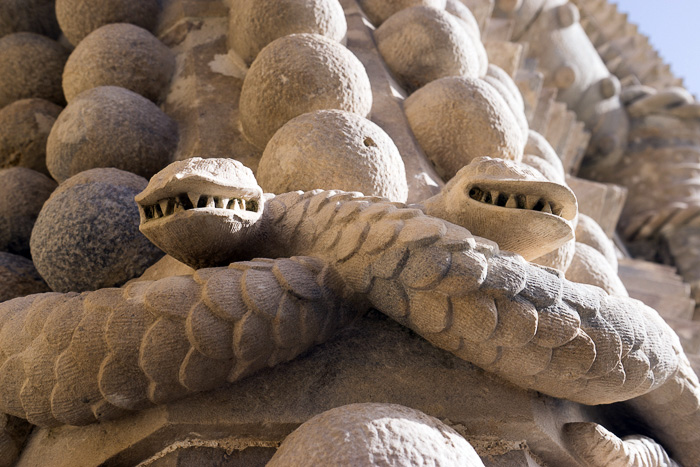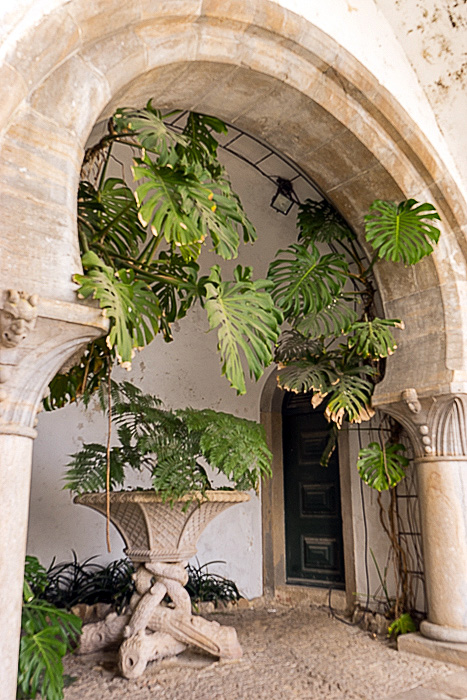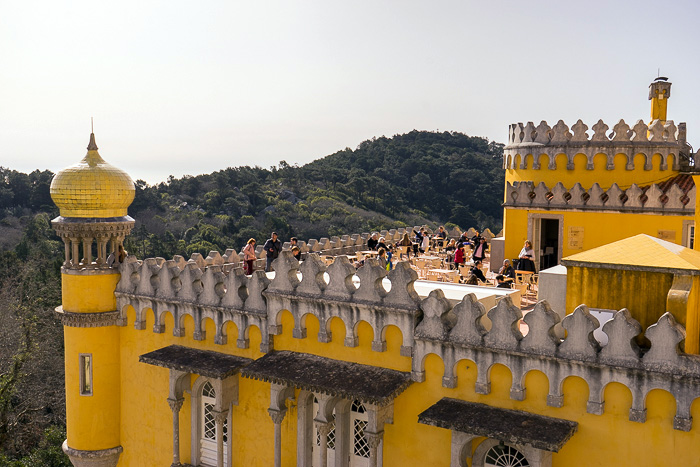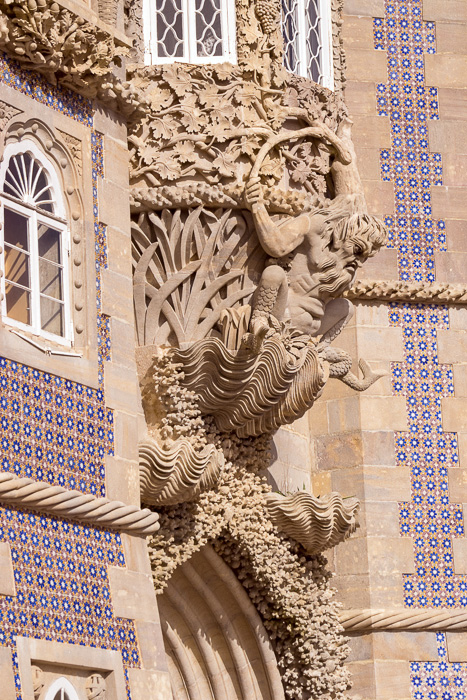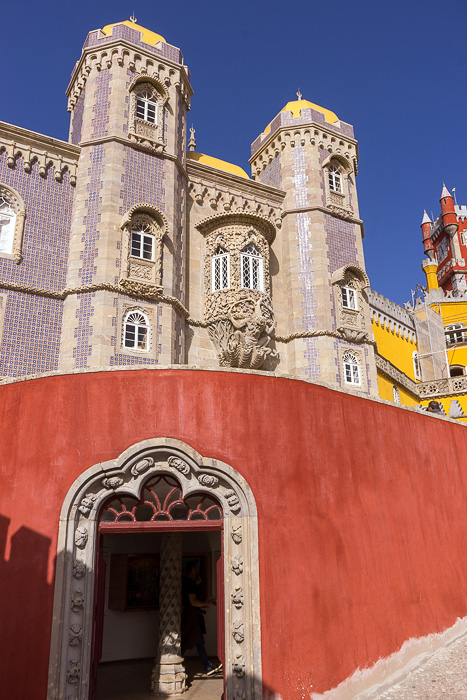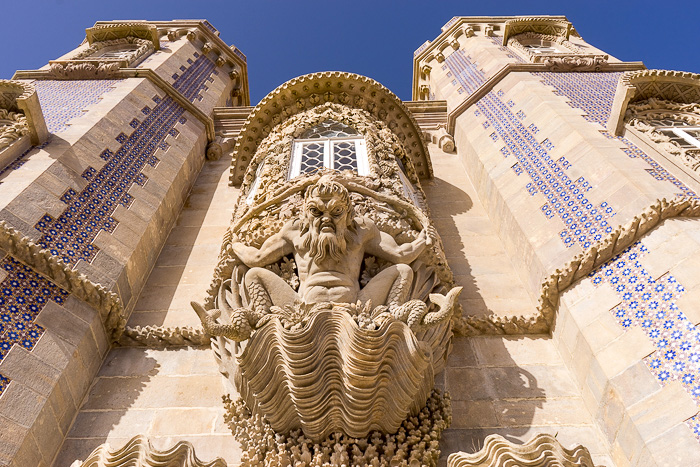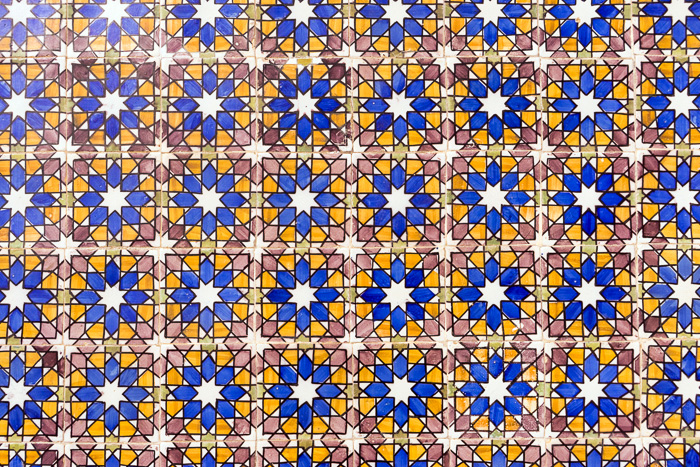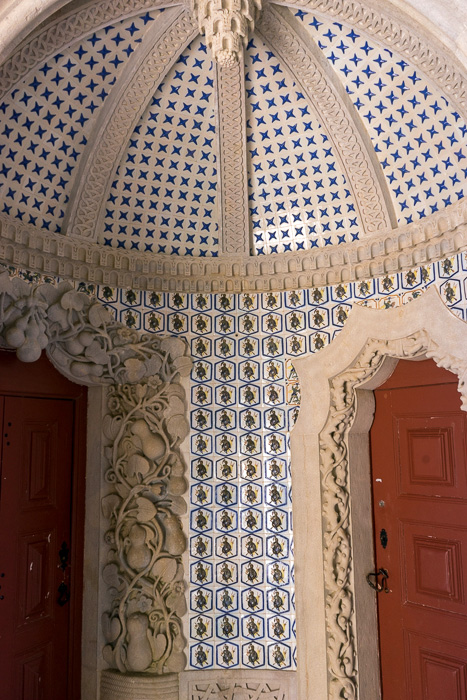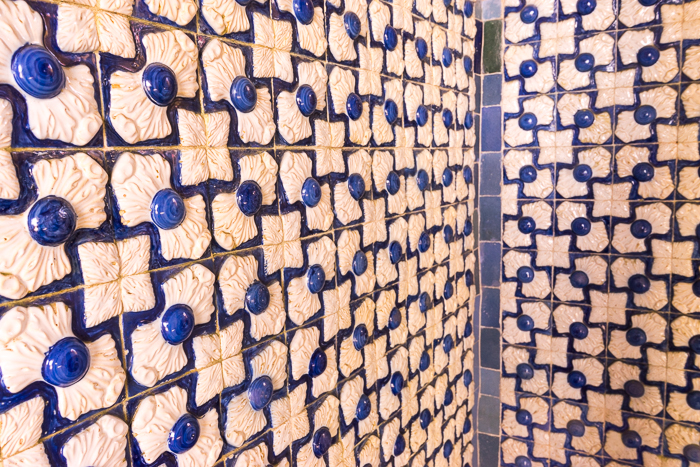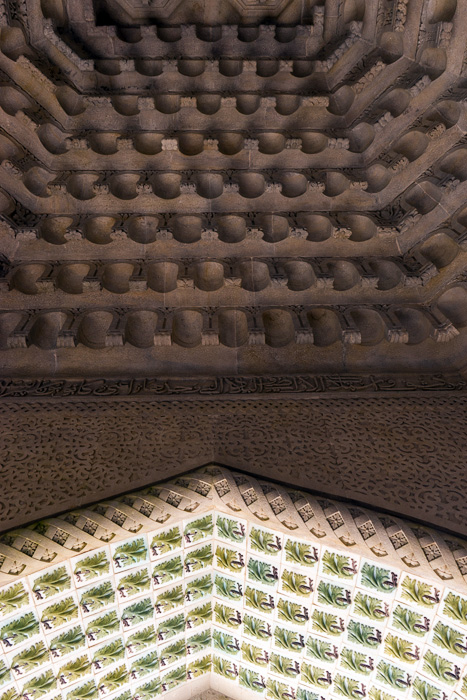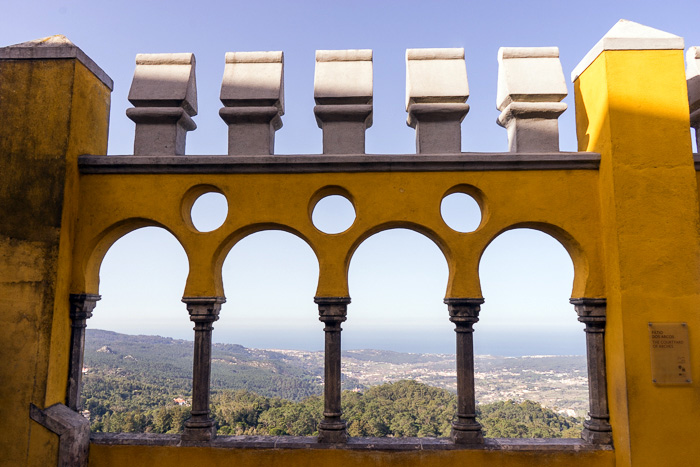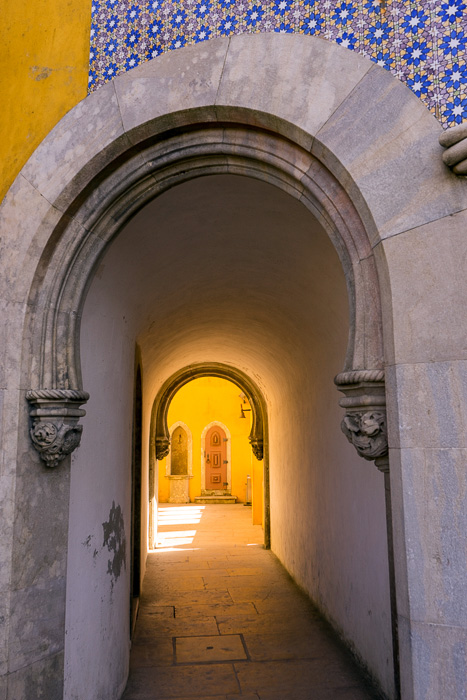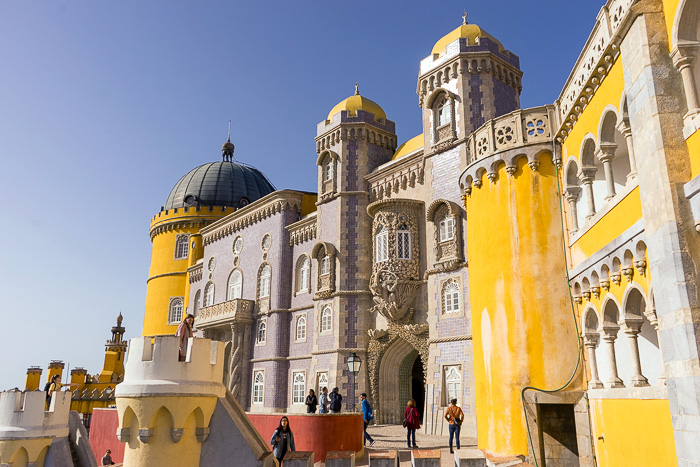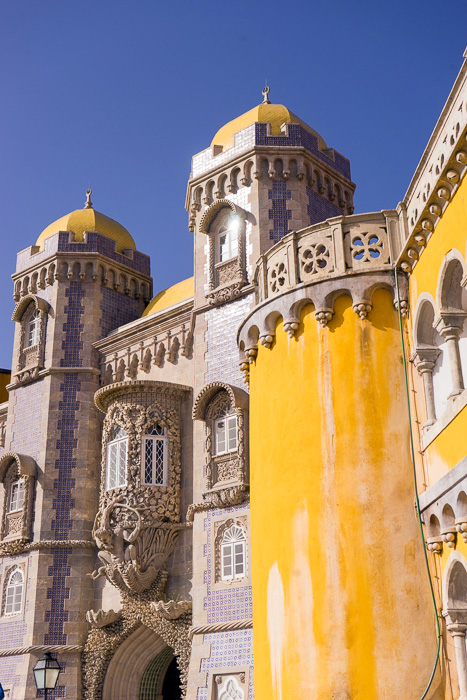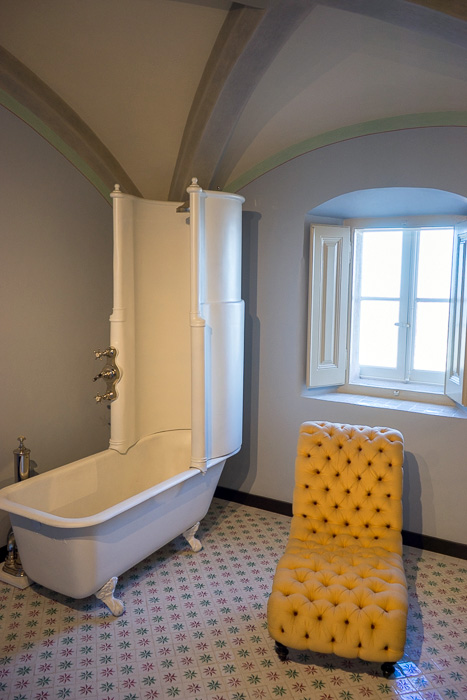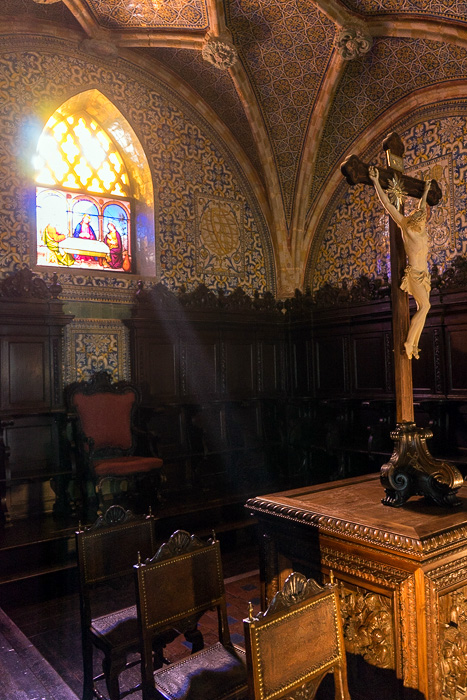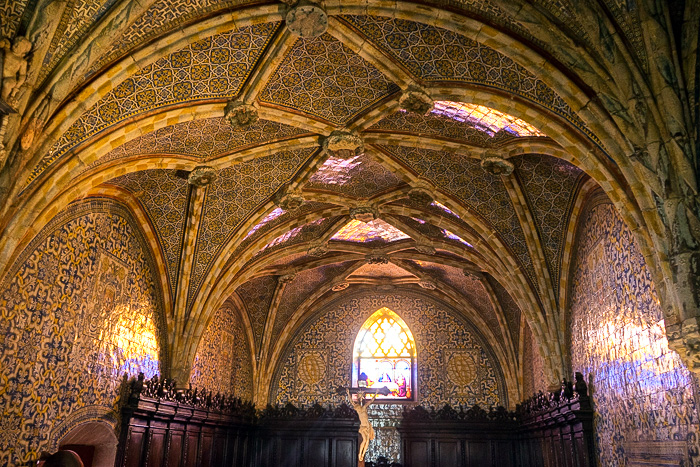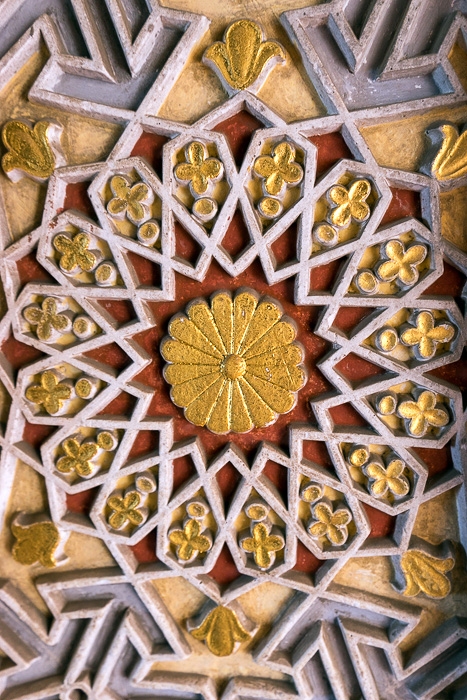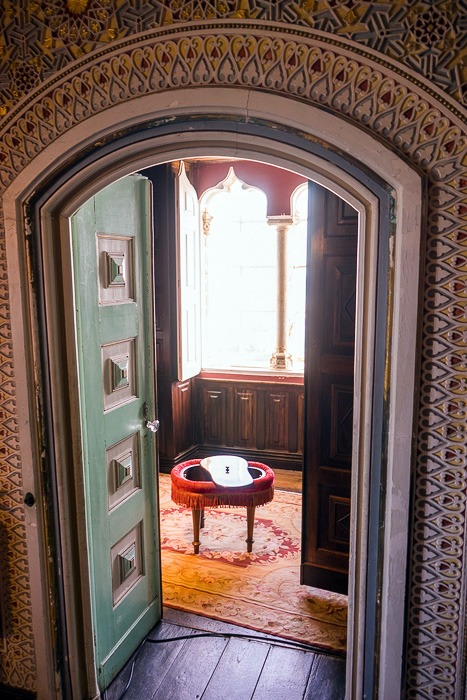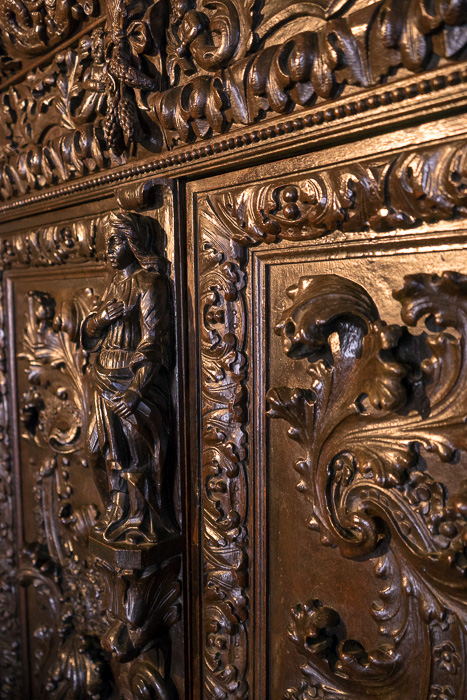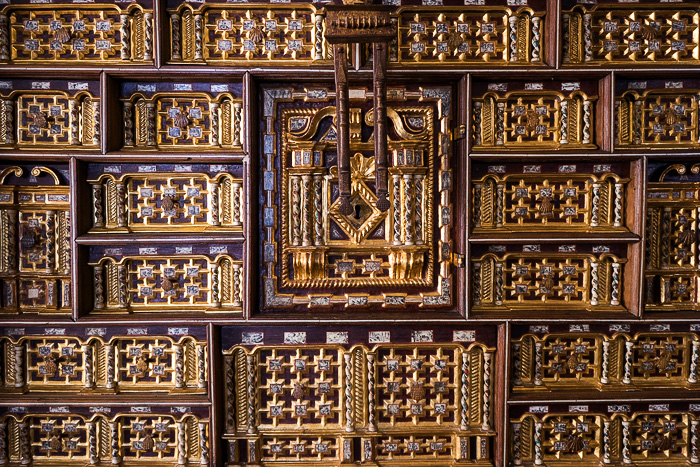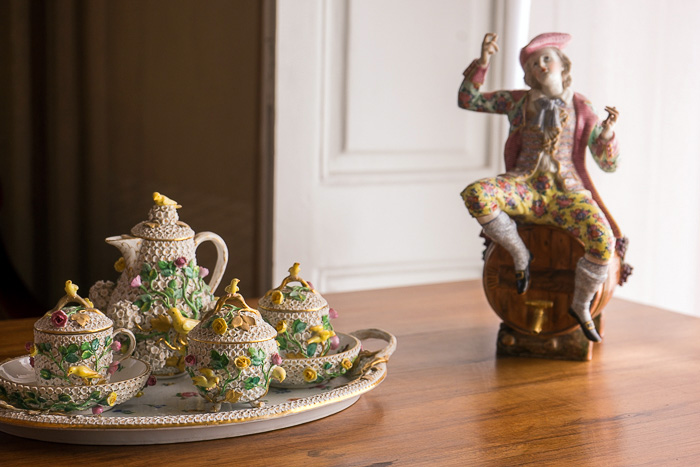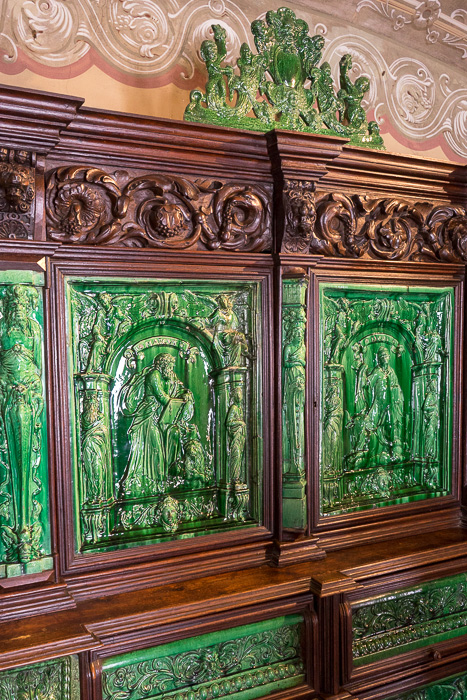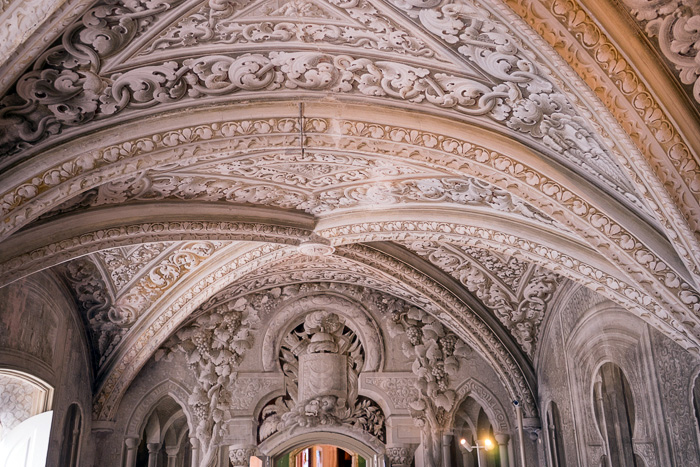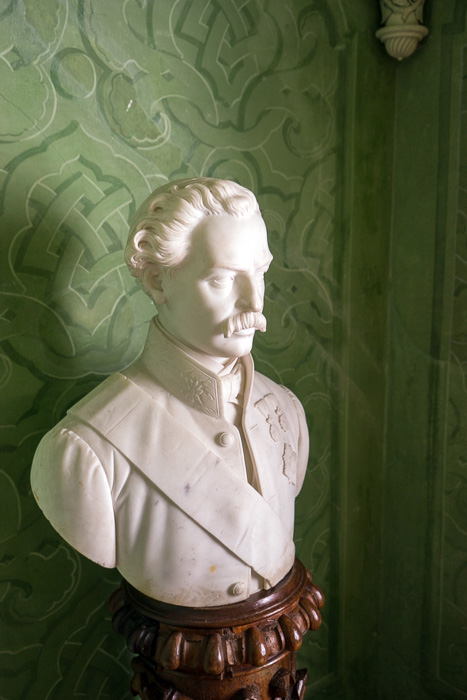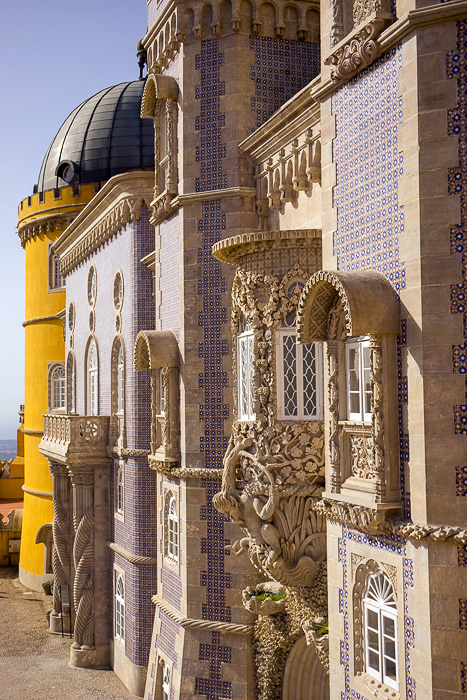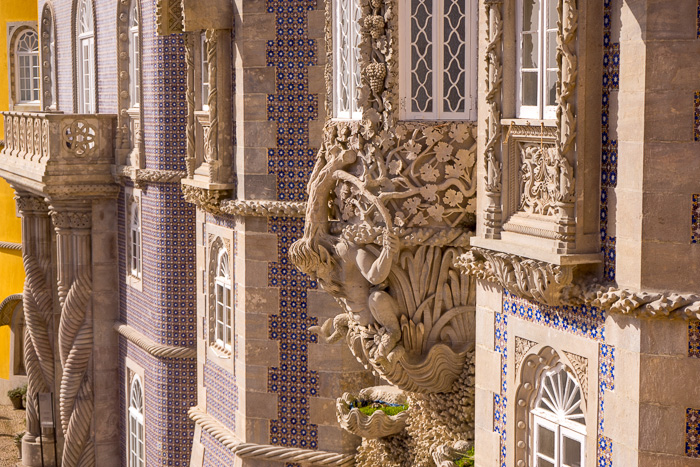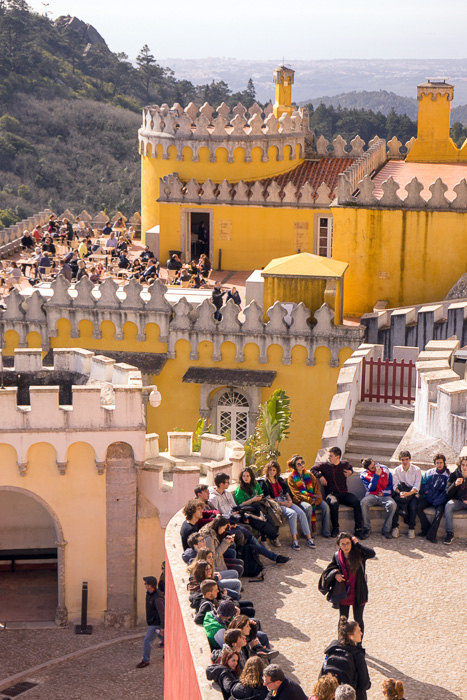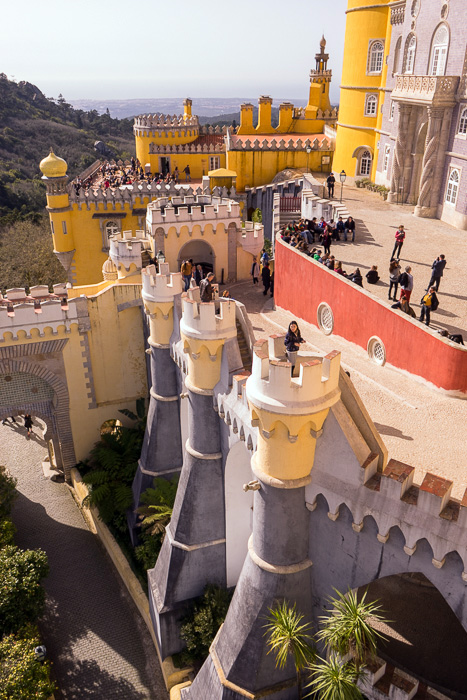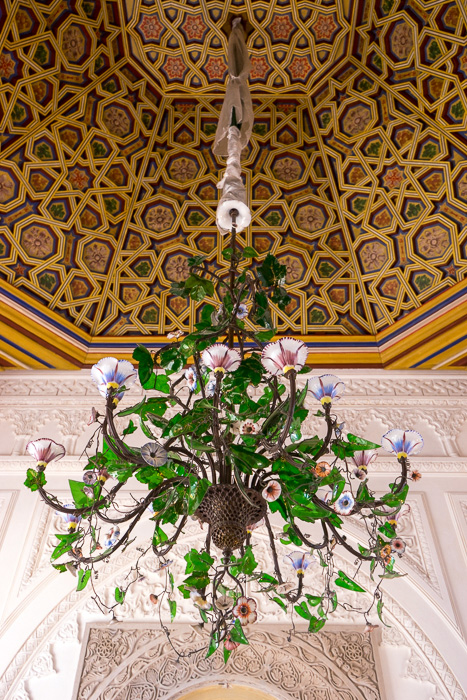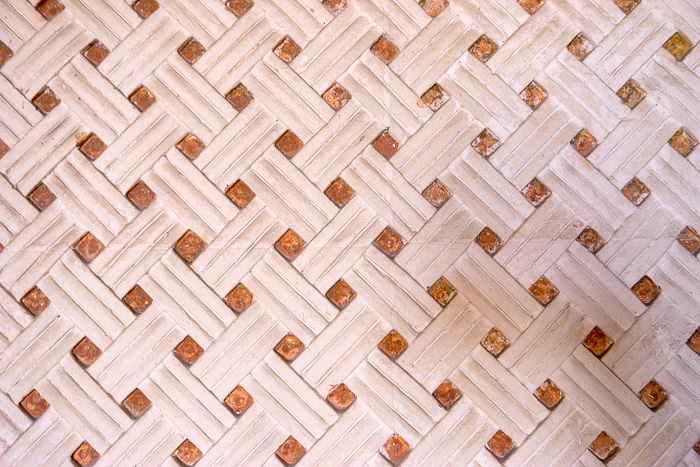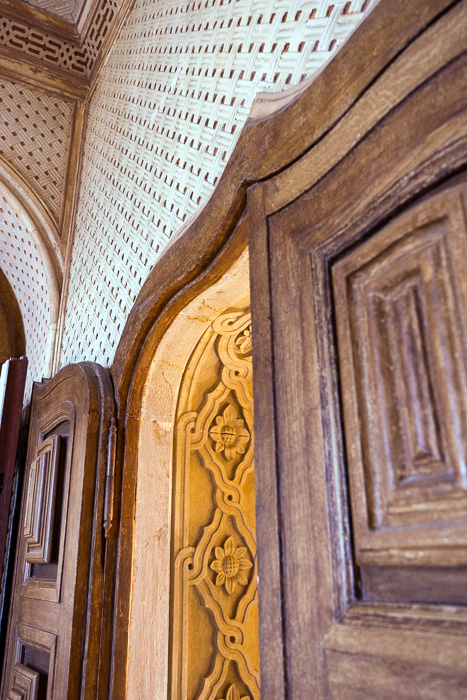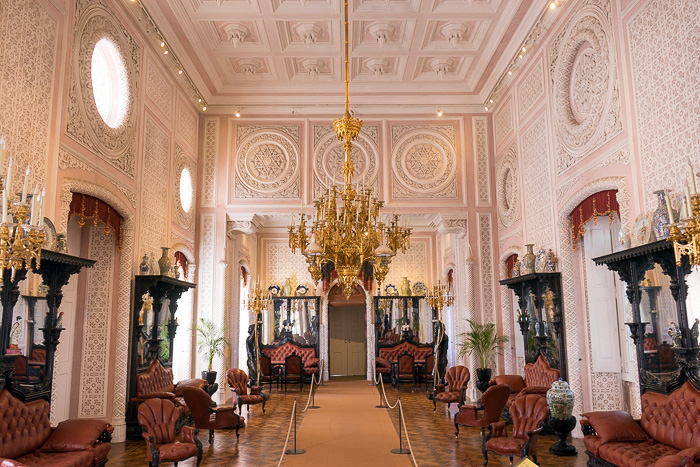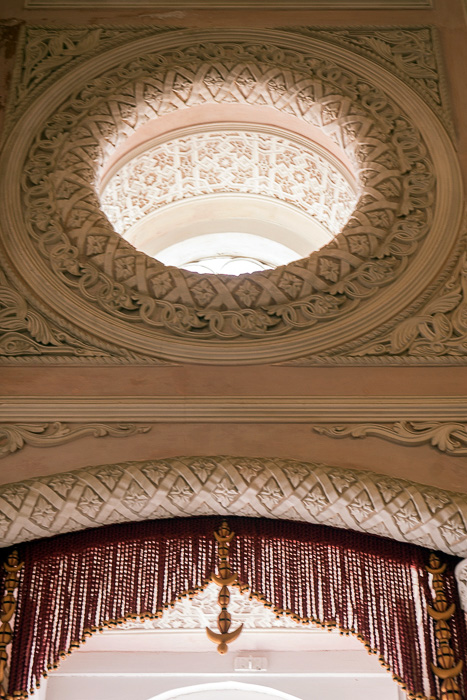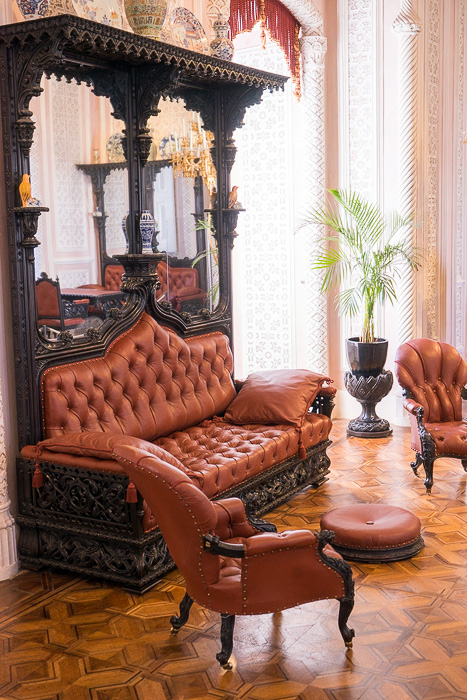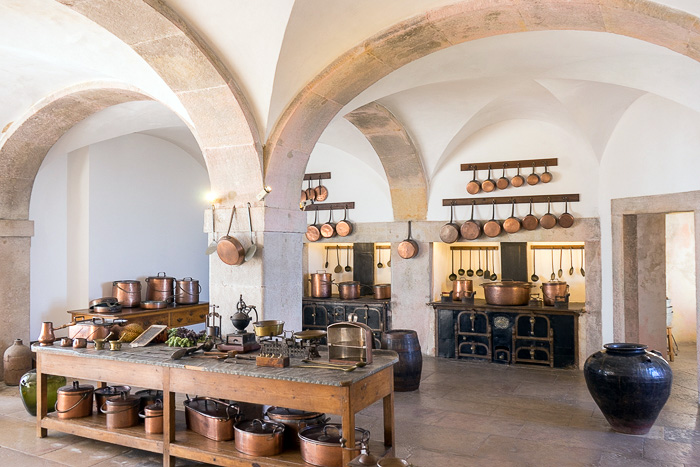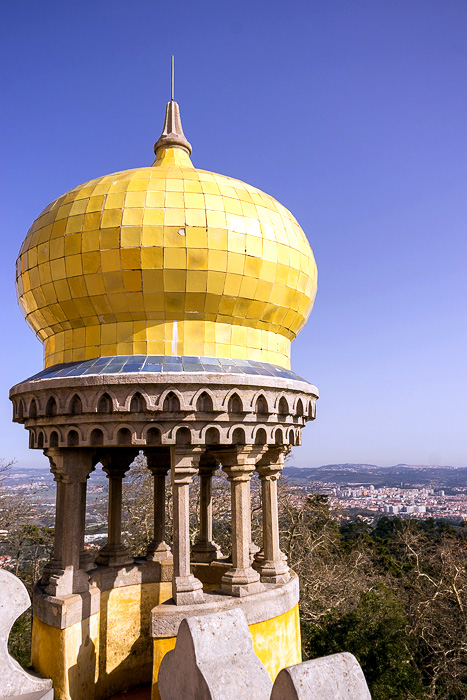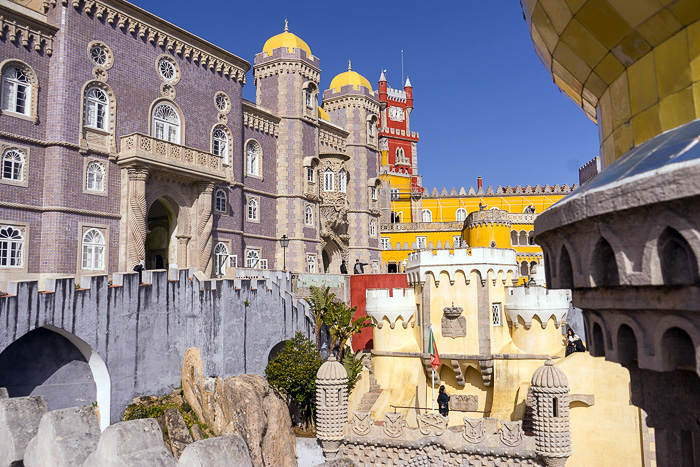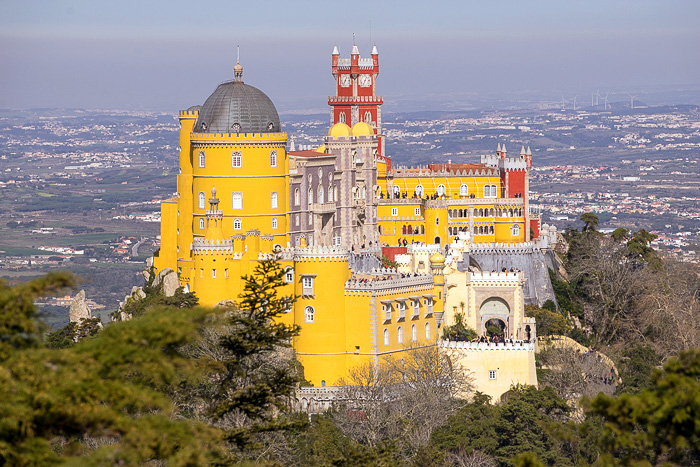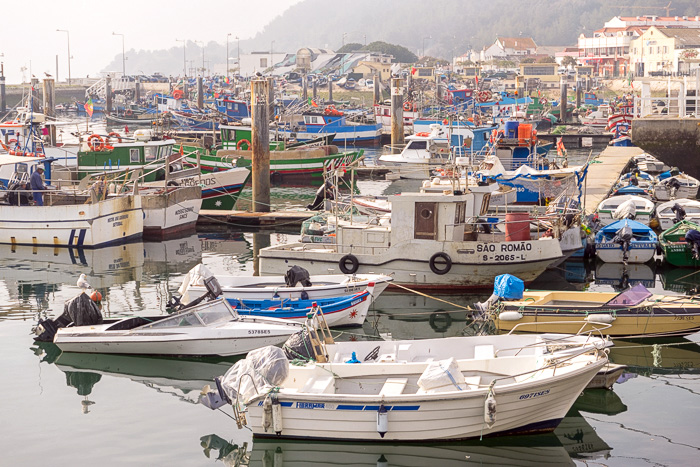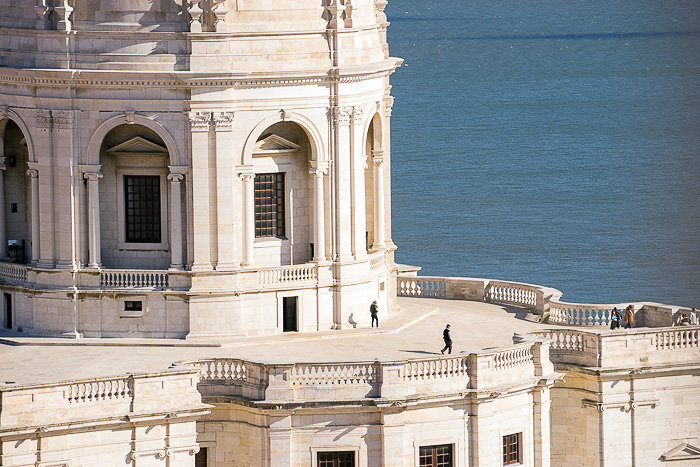The Palácio Nacional da Pena
More from Our Trip to Sintra
Sintra | Palácio Nacional de Sintra | Palácio Nacional da Pena | Parque da Pena
Castelo dos Mouros | Chalet de Condessa | Monserrate | Convento of the Capuchos
Quinta da Regaleira | Cabo da Roca
Little known fact: the architect behind Sintra’s Pena Palace completed the original draft in 35 minutes. Six-year-old Doris Schneebaum submitted her proposal at the end of Arts & Crafts time, having rushed to complete the assignment: “Draw a Silly Castle”. Her teacher, King Ferdinand II of Portugal, took one look and was convinced. “It’s perfect! This shall be my new home!”
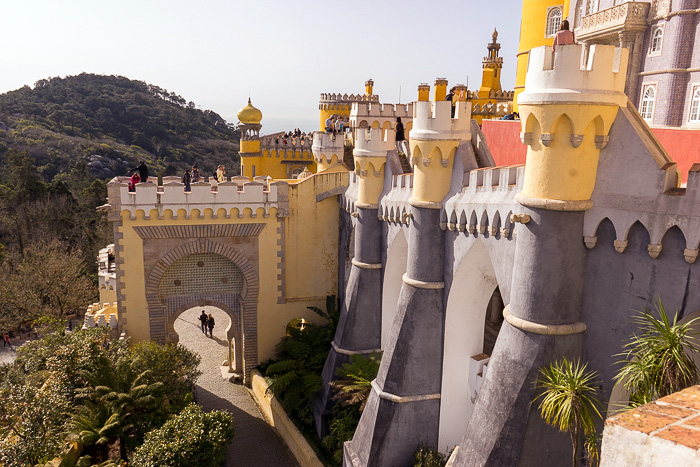
I’m exaggerating a little: the Palácio de Pena actually looks like it was designed by an eight-year-old, not a six-year-old. Bold primary colors like red and yellow sit defiantly side-by-side. Turrets, clock towers, and spires decorate the castle… oh and domes, watchtowers, and parapets … and yes, that’s a minaret. Because at this point, why not? By squeezing in every palace-related feature you could possibly imagine, the Palácio de Pena hurdles into absurdity.
It’s absurd, but it’s also awesome. The “New Palace” of Don Fernando II, the “Artist King”, was built in 1842. Until then, this prime mountaintop location had been home to a Hieronymite monastery. After religious orders were banned in 1834, the King wasted no time in snatching up the property. The castle took around 15 years to construct, and has been the audacious crown on Sintra’s skyline ever since.
We were surprised to see that most visitors were coming up to the gates of the Pena Palace, snapping a few pictures, and then never going inside. It’s understandable: the entrance to the park already costs a lot, and then there’s an extra surcharge to visit the building itself, and this surely puts a lot of people off. Also, it’s not like there’s a lack of other palaces in Sintra.
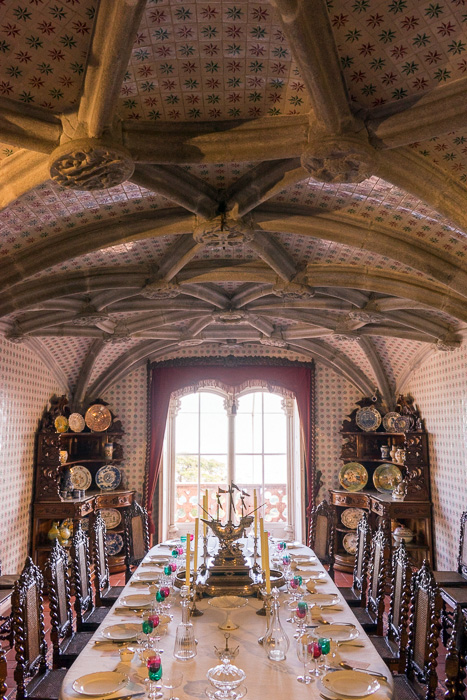
But we went inside, happy to get away from the busloads of tourists. The entrance is through the Gate of Triton, which features a giant half-man-half-fish creature, because of course it does. Unfortunately, the rest of the palace is decidedly less weird. The interior decoration seems to have been assigned to someone still in full possession of their mental faculties, and it’s what you would expect of a regular palace: sitting rooms, offices, chapels, fabulous period furniture and artwork.
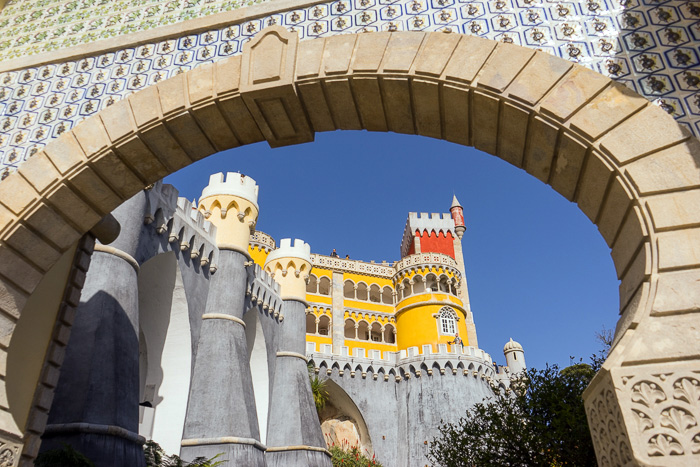
Usually, Jürgen and I are on the exact same page when it comes to visiting places like this, but not today. I was unable to shut off the snarky, sarcastic interior monologue, but Jürgen didn’t join my gleeful mocking. He genuinely loved the palace’s weirdness and patchwork qualities, and was able to discover a lot of angles from which it looked truly beautiful.
Whether you love it or hate it, and whether you’re there for a quick snapshot or an in-depth visit, one thing is for sure: you’re not likely to ever see another building quite like the Palácio de Pena.
